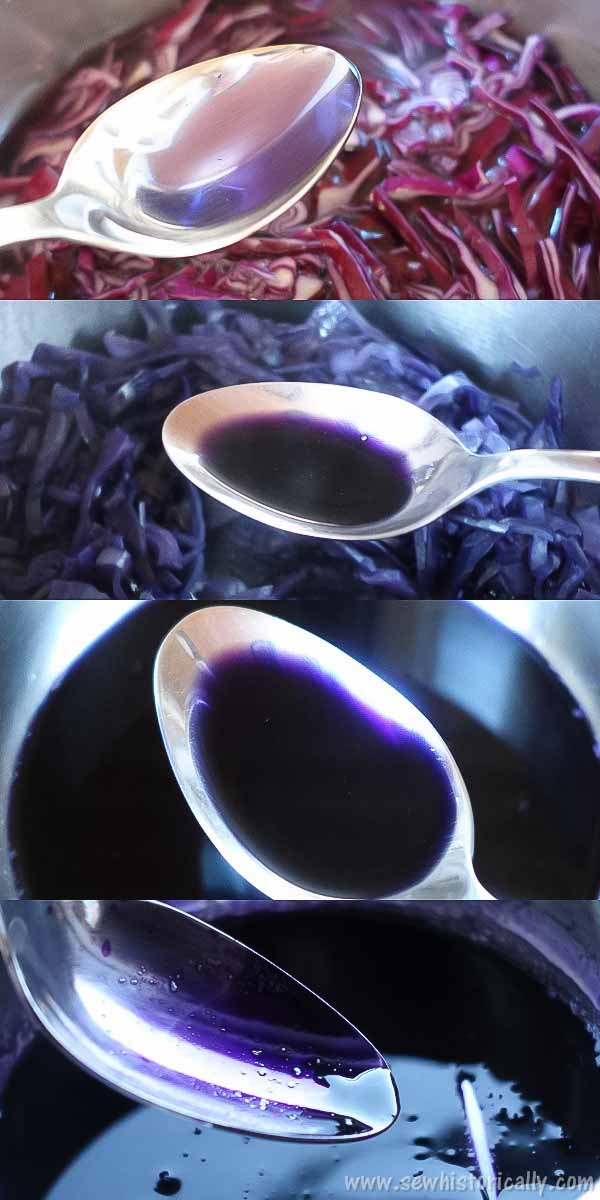If you’re just getting started with natural dyeing, here are some frequently asked questions & answers about eco-friendly and sustainable natural dyeing: The eco-friendly natural dyeing 101!
Do you want to know how to dye your own clothes and fabric in an eco-friendly and sustainable way with natural dyes? Natural dyeing is a fun process but it’s also good for the environment. So let’s get started with natural dyeing! 😀
I try to use natural dyes as eco-friendly and sustainable as possible and I try not to waste food for my natural dyeing (more about it below). My natural dyeing is also different from other natural dyeing blogs because I don’t use alum mordant and I mainly dye plant fibers like cotton fabric.

Which Fibers Can I Dye: Cotton, Wool, Silk, Rayon …?
You can dye all natural fibers – like cotton, wool, silk, rayon, bamboo, ramie & nettle and linen – with natural dyes. But you can’t dye synthetic fibers like polyester or nylon – even most synthetic dyes won’t dye non-natural fibers!
Protein fibers (animal fibers) like wool and silk are the easiest to dye with natural dyes even without mordants! Plant fibers like cotton and rayon can be a little more difficult to dye. But there are dyes that are particularly suitable for plant fibers like red cabbage. And some plant fibers are very difficult to dye: Linen takes the dye badly. And even though cellulose acetate is made of natural fibers (cellulose), it’s difficult to dye (even with synthetic dyes)!
Animal Fibers Vs. Plant Fibers
Like I’ve already mentioned animal fibers tend to be easier to dye than plant fibers. Animal fibers are naturally slightly acidic, while plant fibers are slightly basic. So it doesn’t mean if you can dye animal fibers with a particular natural dye that you also use the same natural dye on plant fibers. Some natural dyes bond better to the slightly acidic animal fibers, whereas other natural dyes bond better to the slightly basic plant fibers. For example, red cabbage bonds well to cotton. However, red cabbage dye has to be slightly acidic during the dyeing process in order that the natural blue dye bonds to the basic cotton fabric.
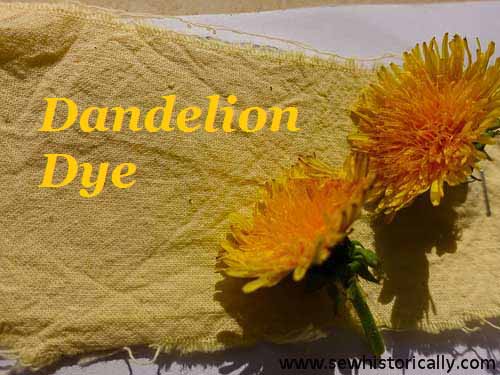
Should I Use A Separate Dye Pot?
You can use a pot that you also use for cooking if you only use edible natural dyes, like red cabbage or black beans, without mordants.
But you should use a separate dye pot if you use non-edible natural dyes, mordants or modifiers. Also keep in mind that store-bought clothing and fabric may contain chemicals even after washing. So to be on the safe side, use a pot that you only use for your natural dyeing experiments.
Also use a spoon or ladle that you only use for natural dyeing. Instead of a spoon you can also use a wooden stick to stir the dye and lift the fabric out of the natural dye.
What Pot Should I Use: Stainless Steel, Enamel, Aluminum, Copper or Iron?
I usually use stainless steel and enamel pots for natural dyeing. Stainless steel pots can slightly change the color of natural dyes. Enamel pots, on the other hand, are the best pots for natural dyeing because they are non-reactive and don’t change the colors at all.
Because I don’t use mordants like alum (more about this below), I sometimes use an aluminum pot instead: Aluminum pots can work as a weak mordant making the natural dyes brighter. This is called pot-as-mordant method. Copper pots can help to bring out yellow and green hues but I haven’t use a copper pot so far. Iron tends to sadden the colors but it also helps to bind the dye to the fibers. It’s particularly useful for natural blue dyes like red cabbage.

I Want To Try Natural Dyeing But I Don’t Want To Waste Food!
I also don’t like to waste food for natural dyeing and the good news is that you don’t have to waste food! For natural dyeing, you can often use the peels of vegetables – like beetroot or onions – that you would throw away anyway! You can also put vegetables that are no longer suitable for eating to good use: I recently used a head of red cabbage that was moldy on one side. I cut off the mold and used the rest to make a natural blue dye! Black bean dye is also perfect because you need the soaking water of the beans for dyeing and you can still use the beans for cooking!
How Much Water Should I Add?
Add so much water that the natural dye stuff or fabric is covered with water. By the way, more water won’t weaken the dye solution and make the color paler. On the contrary, more water ensures that the fabric is dyed more evenly! So add enough water that the fabric is completely submerged. And some fabrics like silk or thick cotton fabric (like denim) need even more water to dye evenly.
Ph Of The Dye Bath
Some natural dyes only dye a washfast color when the dye bath is acidic (like red cabbage dye), while other natural dyes only dye a washfast color when the dye bath is basic (like red hazelnut leaves). You can change the ph of the dye solution with vinegar and baking soda: To make the dye bath more acidic add vinegar (or lemon juice). To make the dye bath more basic add baking soda. Add a little at a time, stir and wait for a couple of minutes. Then add more if necessary.
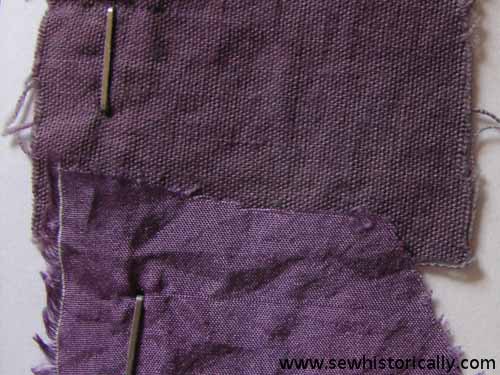
Why Don’t You Use Mordants?
Before dyeing, fibers are usually mordanted – usually with alum – for brighter colors and to improve the light- and wash-fastness. However, I try to be as environmenally-friendly as possible with my natural dyeing. That’s why I try to avoid using mordants that are toxic to the environment and have to be disposed as hazardous waste. For my natural dyeing I only use mordants and natural dye stuff that’s non-toxic for the environment and that I can compost or dispose in the garden after diluting it with water. I usually either use natural dyes that dye even unmordanted fabric like red cabbage, dandelion flowers or onion skins. Or I use natural mordants like tannins and DIY iron liquor.
Hot Dyeing Vs. Cold Dyeing Method
Hot dyeing means that you simmer or boil the natural dye stuff for about 30 minutes to 1 hour to extract the natural dye. After that you also heat the fabric in the natural dye for 30 minutes or longer. So the hot dyeing method is faster but some natural dyes – particularly natural blue dyes – are heat-sensitive. If you want to dye fabric blue with natural dyes, you can’t use the hot method. In order that you don’t destroy the natural blue dye use the cold dyeing method instead. Cold method means that you soak the natural dye stuff in cold water at room temperature and that you also soak the fabric in the natural dye without applying heat. So in contrast to the hot dyeing method, the cold dyeing method takes longer, usually several days.
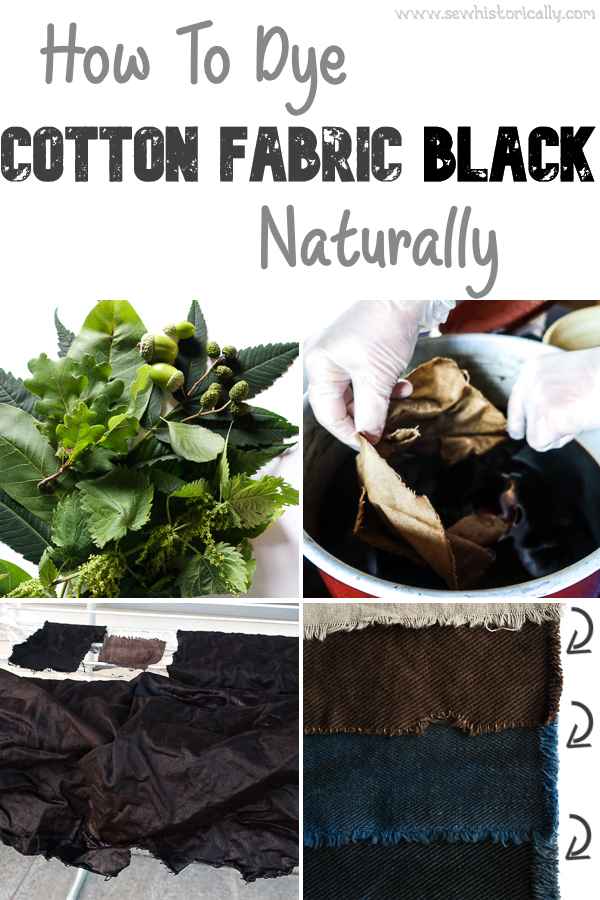
What Should I Do With My Natural Dyed Fabric After Dyeing?
Let the fabric dry for at least 24 hours. This helps to fix the dye to the fibers making it more wash-fast. After that you can wash your natural dyed fabric like any other piece of clothing. I usually wash my natural dyed fabric 2- or 3-times in warm water and castille soap because the fabric bleeds during the first wash. Then I wash it with similar colors in the washing machine.
How To Dispose Of Natural Dye & Mordants?
After dyeing, you can simply pour the diluted natural dye or tannin mordant down the drain and compost the leftover natural dye stuff (or put it in the compost bin). Some natural dyes like nettle dye and DIY iron liquor even make great fertilizers! Dilute DIY iron liquor with plenty of water, then you can use it to fertilize blueberries.

Related: DIY Natural Fabric Printing Inks
Why Don’t You Use Modifiers?
It’s true that you can modify colors after the natural dyeing process: For example, you can turn blue fabric (dyed with red cabbage) pink with an acid like vinegar, or green with a base like baking soda. However, as soon as you wash (or wear) your fabric the modified color is gone and the fabric turns back to its original color. I’ve never quite understood why you should use (and waste) modifiers when the ph of water and laundry detergent makes the modified color disappear again! Because I don’t want to just put my plant-dyed fabric in a file! I want to wash and wear my natural dyed clothing like any other piece of clothing. 😀 That’s why I don’t use modifiers.
However, you can use modifiers if you never plan to wash your plant-dyed fabric – e.g. an artwork.
How Should I Care For My Natural Dyed Fabric?
You can wash your natural dyed fabric like any other piece of clothing in the washing machine. Wash it with similar colors and use a mild detergent. Don’t use harsh detergents or bleach. I also wouldn’t recommend using vinegar as a fabric softener because this can change the ph of the natural dyed fabric: Natural dyes are ph-sensitive! Also dry your natural dyed fabric in the shade rather than in the sun. But keep in mind that natural dyed fabric will fade over time. But even fabric dyed with synthetic dyes will fade over time!
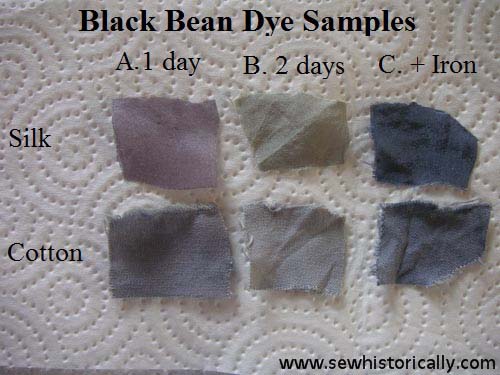
I Don’t Like The Color Of My Natural Dyed Fabric Anymore!
Natural blue dyes can fade to pale blue in about 3 or 5 years or turn gray, and berry dyes can turn brown after a couple of months. So if you don’t like the color of your natural dyed fabric anymore, there’s a solution: You can just re-dye it or overdye it with another natural dye! For example, you can overdye pale blue fabric with natural yellow dye like dandelion flowers making green fabric! 😀
If you have more questions about natural dyeing, don’t hesitate to ask them in the comments below! 😀
